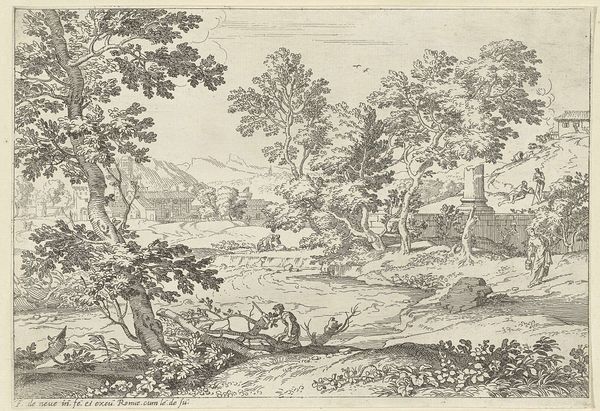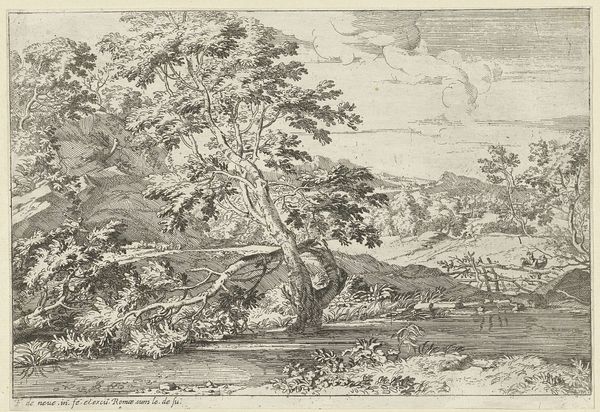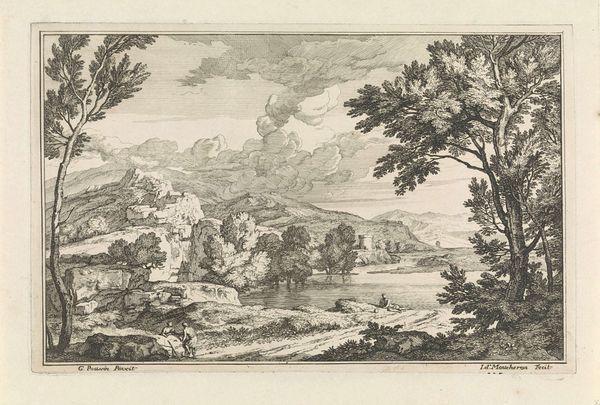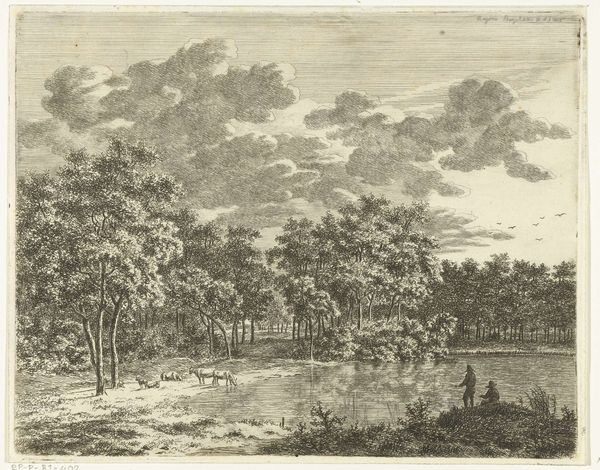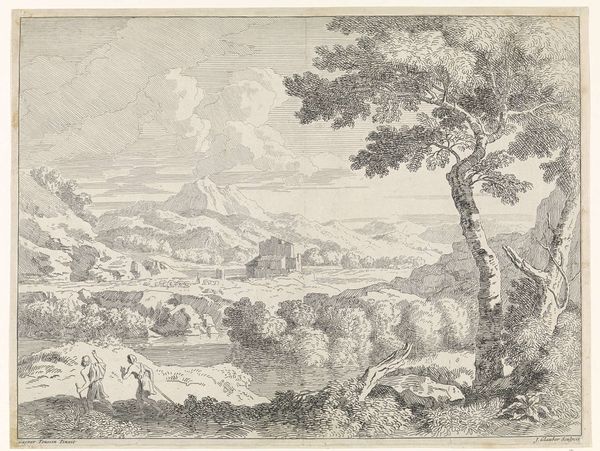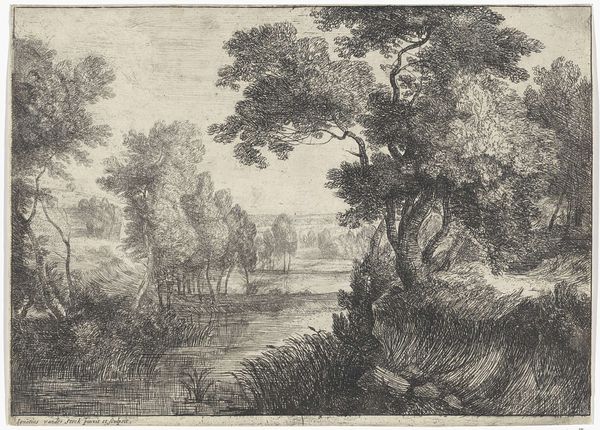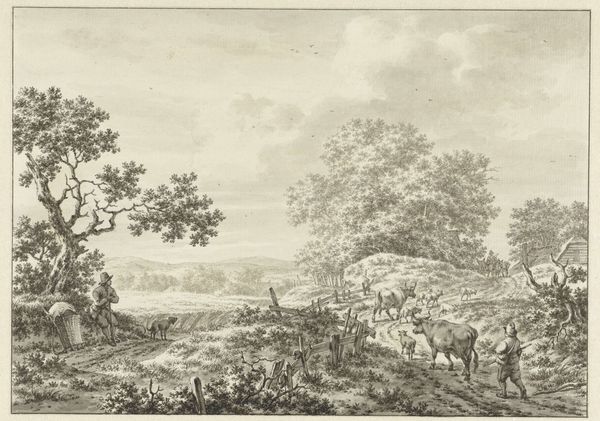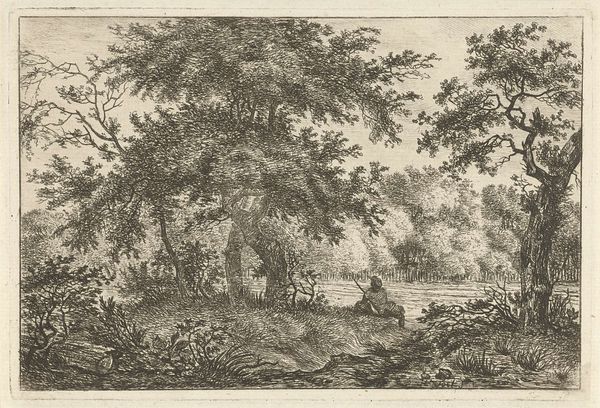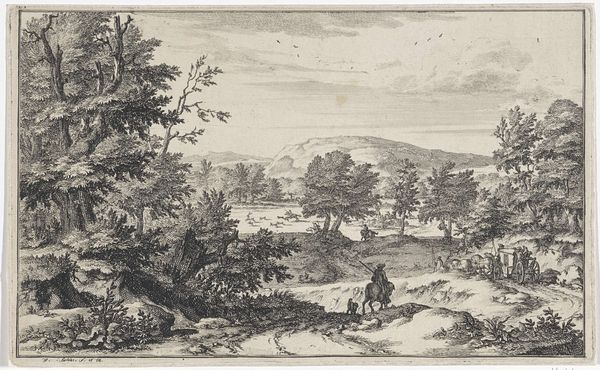
print, etching
#
baroque
# print
#
etching
#
landscape
#
realism
Dimensions: height 187 mm, width 273 mm
Copyright: Rijks Museum: Open Domain
Franciscus de Neve created this etching of a landscape with shepherds and sheep. Likely made in Rome during the seventeenth century, it depicts an idealized view of rural life. This image operates within a well-established tradition of pastoral art. The theme of shepherds and their flocks evokes a sense of tranquility and harmony with nature, a perspective that appealed to urban elites. The composition, with its careful arrangement of trees, rocks, and distant mountains, invites the viewer to imagine the landscape as a space of leisure and contemplation. Rome and its surrounding countryside was a popular subject for artists at this time. The Catholic Church, which commissioned many artworks, often used landscape imagery to evoke the idea of a divinely ordered world. Analyzing the social and institutional context of such images allows art historians to understand whose values they reflect, and whose they obscure. By researching the history of pastoral imagery and the patronage system in seventeenth-century Rome, we can better understand its cultural work.
Comments
No comments
Be the first to comment and join the conversation on the ultimate creative platform.
